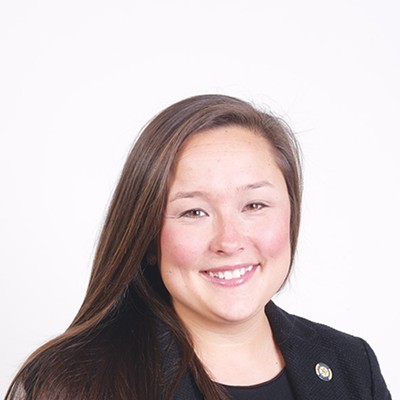
Five years into their solar installation business, Ctaci and Chris Gary closed their Sun City Solar Energy office in northwest Oklahoma City and began operating from their home. The reason was simple: Prospective buyers wanted to see solar energy in action. On top of the couple’s home, solar panels were absorbing the sun’s rays and converting it into electricity, powering the home’s refrigerator, television, appliances and more.
Since seeing is believing, the couple led prospective buyers around their yard, pointing to the roof panels and examining the electric panel where, often, excess energy spun the meter backward as it built up electric credits. While there are up-front costs with installing solar panels, many customers weighed the cost with the potential energy savings and environmental benefits. With solar installation, customers are eligible for a federal solar investment tax credit, which currently allows property owners to deduct 30 percent of the cost of installation.
“Since we started the business, it has become more and more popular every single year,” Chris Gary said.
In 2007, the couple began their business after their own search for electric bill relief on a lake house. In the first few years, the business met customers’ needs by installing solar thermal systems for hot water heating and pools. To install 15 solar panels on a roof, the price tag neared $30,000 in the early years. Now, with advances in technology, the price for 15 panels comes to $12,000 to $13,000 before applying for the tax credit. Most solar systems pay for themselves in six to seven years, Chris explained.
With the price of solar panels dropping, coupled with attitudes changing in favor of renewable energy, solar energy has taken off in popularity for Sun City Solar Energy, but also across the nation. Between 2014 and 2015, the state increased its solar capacity by 526 percent, according to Solar Energy Industries Association.
Between April and June, the solar market installed 2,387 megawatts of current, which is roughly enough electricity to power 1.55 million homes, according to the association. It was the largest second quarter ever for solar energy in the United States.
“Solar energy is starting to take off in Oklahoma,” Chris Gary said. “It is exciting here. We see the difference today compared to 10 years ago. It’s the cost, attitude and overall perceptions of solar that have all changed tremendously.”
Solar potential
There’s no doubt that Oklahoma has a long history as an energy-producing state, thanks in large part to the development of oil and natural gas. In recent years, indicators have shown solar energy has a bright and rising future in the Sooner State along with wind energy.This spring, Google launched its Project Sunroof program, which estimates sunlight and translates it to energy production. Oklahoma City ranked No. 8 on the search engine’s list of most solar-potential cities in the nation. Google determined that OKC has enough solar-viable rooftops to meet and exceed the city’s residential power needs.
With solar potential rankings come solar production rankings. Oklahoma quickly moves from a high-ranking solar potential state to bottom of the list in terms of the state utilizing its solar resource. Solar research and advocacy group Solar Power Rocks awarded Oklahoma an “F” grade and ranked the state No. 49th on its solar report card. Not only does the state lag behind in production, but a lack of community solar laws and policies are believed to contribute to fewer solar panels on Oklahoma rooftops.
One of the issues is the state’s net-metering regulation. Since most Oklahomans with solar aren’t completely “off the grid,” they still connect to a utility company for any additional power needs. Under current Oklahoma law, electric customers with solar systems can’t carry forward credits for excess power more than one month. Another policy issue Oklahoma faces is its lack of a standard interconnection rule. Without a rule, Oklahomans face inconsistent requirements for connecting their solar energy systems to the electric utility grid.
Such issues were expected to be discussed at the Oklahoma Capitol last month. Democratic Reps. Claudia Griffith, Ben Loring, Forrest Bennett and Cyndi Munson requested an interim study on the economic benefits of solar energy, which included discussion on establishing a standardized interconnection rule and the existing net-metering regulation. The study was postponed due to the special session.
Border crossing
At Sun City Solar Energy, clients led the company across the state and into Arkansas and north Texas to install solar panels. Ctaci and Chris Gary see the success of states leading the adoption of solar energy. In Arkansas, under the state’s net-metering laws, customers’ excess electricity from solar energy can carry over up to one year because of its more friendly net-metering regulations.Texas policies lack net-metering regulations but embrace third-party leasing, also called third-party ownership. Under third-party leasing, private companies can lease solar panels to homeowners and sell them the energy through third-party power purchase agreements. The model accounted for 72 percent of all residential solar installed in the United States three years ago.
Policies aside, Oklahomans who want solar energy get it, explained Chris Gary. What drives people to solar varies but often includes environmental stewardship, savings over time on electric bills and a desire to match a solar energy system highlighted on an HGTV show.
“After we install their solar, we say ‘Welcome to our solar family,’” Chris Gary said. “It’s like a family. We become pretty good friends with many of our customers. People that have solar like to talk about their solar.”
Print headline: Solar boost; In Oklahoma, where solar potential and solar production rankings don’t match, residential solar power systems are rising.











